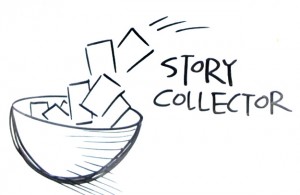Here's what usually happens: You attend a conference and decide to live blog a session or two. You might even pre-draft or pre-research a small portion of the post to include the names of the speakers and some background information about them. Typically, you start the post like this:
I am at such-and-such conference attending a presentation by so-and-so about this interesting topic.
And just like that, you've already lost most your readers. That first sentence? It's the live-blogging equivalent of the infamous what-I-had-for-breakfast tweet. Ho-diddly-hum. Nobody cares. Most of your readers aren't at the conference, and they've likely never heard of the speaker before. Why should they care?

You have to make them care. And you have to do it in the first paragraph. Trust me, presentation abstracts, speaker bios and conference names are not interesting. They are not first paragraph material. Save that stuff for the second or third paragraph, after you've hooked readers in and can convince them to skim over a paragraph of boring background information.
But how do you do that? How do you hook them at the start of the post? You write an honest-to-goodness, journalistic lede. And you tell a good story.
Let me show you an example. The first is a recent post from Anna Brown. She was attending the Premier Business Leadership Series in Amsterdam this Spring, and provided this coverage:
Known as one of the most remarkable business turnaround stories in British history, global retailer Tesco grew from being half the size of its two biggest competitors to six times the size of either of them. In fact after reporting £2 billion in profits in April 2005, its CEO until a year ago, Sir Terry Leahy, faced protests that the company was “too successful.”
Now Tesco is one of the largest retailers, operating in 14 countries, with more than 500,000 employees and serving millions of customers each week.I had the pleasure of hearing Leahy talk about nine management lessons from this transformational business experience at The Premier Business Leadership Series in Amsterdam.
This doesn't sound like an, "I'm at this conference and you're not," kind of post, does it? No. It's a post about a business turnaround. It's a post about a retail store doing things right. It's a how-to post about leading an organization through change. It tells a story. Oh, and by the way, the information for the post was gathered at a conference.
Do you see the trick there? Instead of focusing on herself and what she is doing, Anna is focusing on the reader and the content at the conference. She has her audience in mind and writes an introduction to the topic that is interesting to them. She promises tips, and the blog post delivers. And, since she has written a good title and a good lede, people will find it in search results and read it for years to come. That makes it evergreen content.
Here are two more examples that follow the same pattern. I'm not going to do full excerpts on these, but you can click through on the titles to read more.
Again, you see how the title is catchy, the first paragraph is topic-based, and the conference information is buried further down into the post. This is content that even new readers will actually read.
Consider what might happen when readers come to these posts via search in a few years. The content isn't boring or dated. It's still interesting, and the tips are still relevant.
We have found that writing our conference coverage this way not only improves readership for new and old posts, but it also makes it easier to re-use our conference coverage posts as print articles and press pitches. That gives us even more mileage out of the content we create at conferences.
My challenge to you is to try this it at your next conference. It only takes a few more minutes to write that interesting lede and tell that interesting story, and the long-term results will be seen in your readership for that post for years to come.

8 Comments
I love learning about better ways to do things, so thank you for the great tips, Alison! I plan to take up your challenge and re-think the way I approach event blogging and hopefully improve the quality of my contributions to this conversation.
Great tips Alison! Thanks!
Good tips, Alison. How do you think this applies to Twitter?
Good question, Becky. I'm not sure if it does apply specifically to Twitter. I would probably have a whole different set of tips and thoughts for tweeting conference presentations. Maybe that will be a future post!
Thank you! This is a great tip for anyone who wants to take their blogging to the next level. In a recent Content Marketing Institute webinar, I heard another great tip from Marketing Profs' Ann Handley: Good content is more than storytelling; it's telling a great story. That's what you I think your tip is about here. Getting the great story in a way that captures the audience.
A great lead pulls the reader into your content. Sometimes, I get in such a hurry to get the story out that I don't take enough time with the one of the most important pieces - the lead. Thanks for the reminder.
Great ideas here. Regarding Twitter, I have students in my journalism classes use it and other social media to create Storify pages about events on campus.
Storify is a good example of how to get more mileage out of Twitter event coverage. I definitely encouraging editing when using storify, though, or the piece can get very long, very fast.
Pingback: Nine #SocialMedia Speaker Tips to Use Before, During and After Events - SAS Users